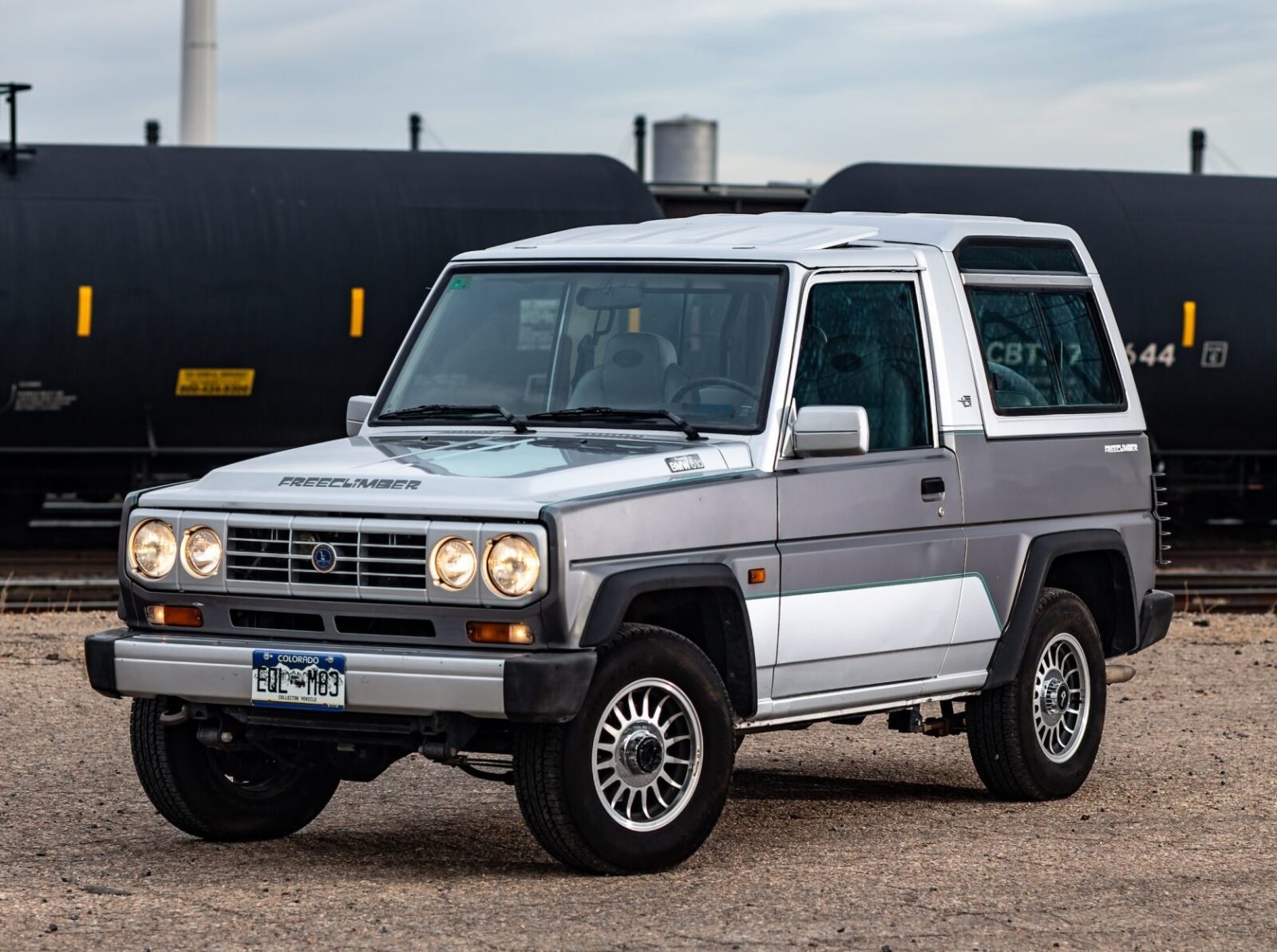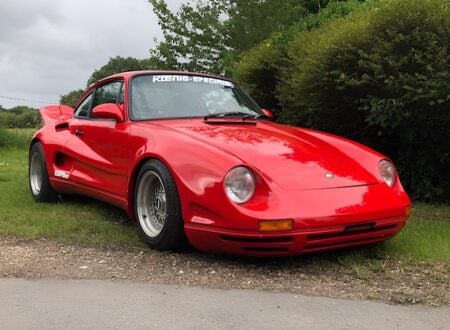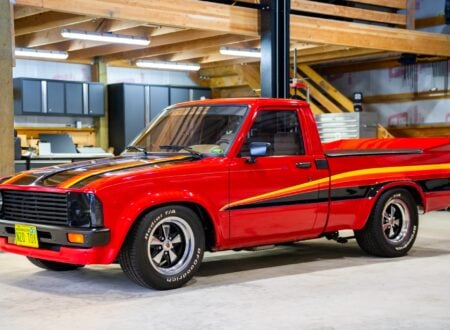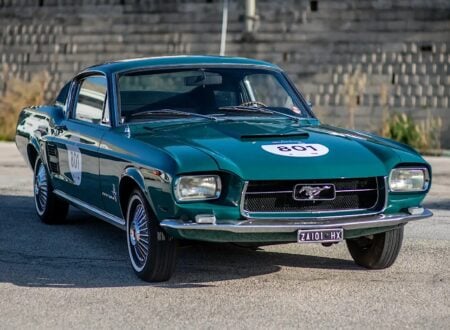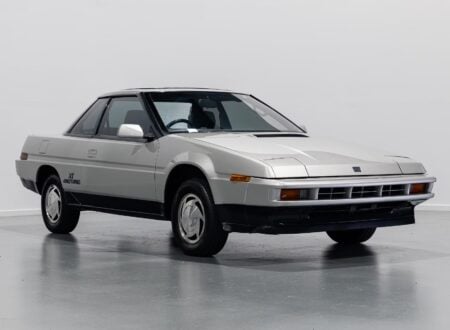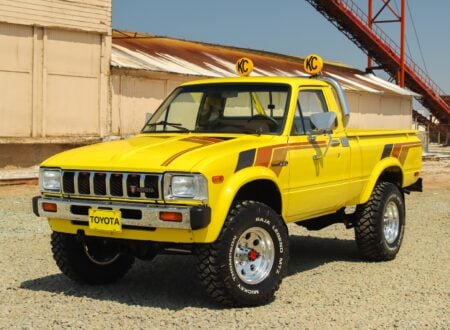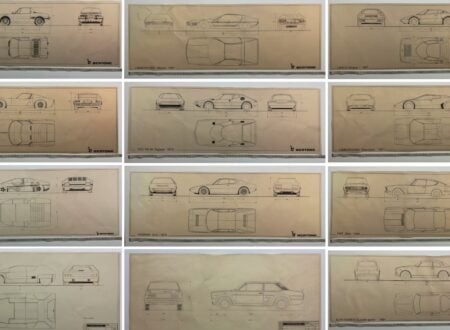The Bertone Freeclimber is a little-known 1980s-era 4×4 that started life as a Japanese SUV, before being modified by the Italians, given a German engine, and then (mostly) sold to the Spanish and French.
The Freeclimber is one of very few series production cars ever offered by the Italian coachbuilder Bertone, the same design house that created the Lamborghini Miura, Alfa Romeo Montreal, Maserati Khamsin, Iso Rivolta, and countless others.
Fast Facts – The Bertone Freeclimber
- The Bertone Freeclimber was a unique 4×4 produced from 1989, based on the Daihatsu Rugger but modified in Italy by Bertone with BMW engines and upgraded styling. It combined Japanese reliability, German powertrains, and Italian design, and was primarily marketed in southern Europe, with relatively few reaching the United States.
- Buyers could choose between a 2.4 liter BMW turbodiesel or 2.0 liter and 2.7 liter BMW M20 petrol engines, all paired with a 5-speed manual transmission and dual-range transfer case. The vehicle retained the Daihatsu’s steel ladder frame, live axles, ventilated front disc brakes, and traditional rear drums.
- Exterior upgrades included a redesigned grille, quad headlights, and a stepped removable roof section with fixed-glass panels up top. Inside, Bertone added leather seats with integrated headrests, Veglia gauges, and premium Italian detailing to elevate the vehicle’s interior well above its utilitarian Daihatsu roots.
- The 1990 Freeclimber featured here includes OZ wheels, BFGoodrich tires, a factory roll bar, and a two-tone silver/gray paint scheme with green stripes. The odometer reads just 24,000 km (~15,000 miles). It’s now for sale in Denver, Colorado with service records, spare parts, and a clean Colorado title.
A History Speedrun: The Bertone Freeclimber
The Bertone Freeclimber entered production in 1989 right around the time that the Bertone X1/9 sports car was leaving production. It seems likely that there had been meetings behind closed doors at the Italian coachbuilder about what to do next, and they (correctly) anticipated that luxury SUVs were going to be the way of the future.
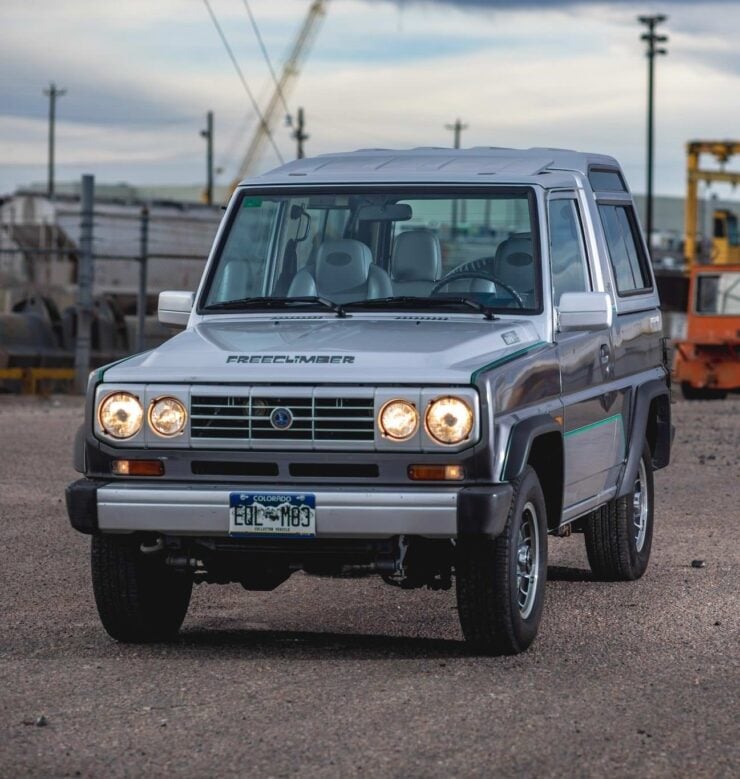

However it came to pass, the Bertone Freeclimber would prove to be a surprisingly prescient model from the age-old Italian firm. They based the car on the Daihatsu Rugger (also known as the Rocky), but fitted it with a curious interior and a series of exterior modifications to ensure it looked unique.
Power was provided by the customer’s choice of a 2.4 liter BMW turbodiesel or either a 2.0 liter or a 2.7 liter version of the BMW M20 engine. This engine was mated to a 5-speed manual transmission, and a dual range transfer case, sending power to either the rear wheels only or all four wheels when selected.
The Daihatsu Rugger platform consisted of a steel ladder frame chassis with a steel body over the top, and this was all brought over to the Bertone Freeclimber, along with live axles front and back, four-wheel leaf springs, with ventilated disc brakes up front and traditional drum brakes in the rear.
The body changes applied in Italy by Bertone were enough to change the look of the vehicle, without actually modifying the sheet metal. They added a new front grille with a quad headlight arrangement and a removable rear roof section with a stepped top and a pair of narrow fixed-glass panels – somewhat similar to those used on the top roof section of the Land Rover Discovery.
The interior is where the Italian coachbuilder really went to work, fitting new leather seats with integrated headrests up front that were vastly superior to the Daihatsu originals. They also added some Veglia gauges and other touches to let you know that Italians had given the cockpit a once over.
The Bertone Freeclimber would be built across two generations, the Freeclimber and the Freeclimber II, with the latter car being based on the smaller F300-series Daihatsu Feroza.


Approximately 2,800 examples of the Freeclimber would be built in total, and only a small number of these seem to have survived to the modern day, with very few having made their way to the United States.
The 1990 Bertone Freeclimber Shown Here
The vehicle you see here is an original Bertone Freeclimber from 1990, the second year of production. It’s a finished in a two-tone silver and gray scheme with green accent striping, it has a rear-mounted spare tire, a tow ball, and protective grilles over the tail lights.
It rides on 15″ Ruote OZ wheels fitted with BFGoodrich Long Trail T/A Tour tires as well as manually locking front hubs. Inside you’ll find leather-trimmed front bucket seats with a matching leather rear bench seat, a heater, all-weather floor mats, and leather door panel inserts.
It has air conditioning installed however the listing notes that it doesn’t currently blow cold, so it will need attention from the new owner to get it working again. The odometer shows 24,000 kms (~15,000 miles), and it has a factory roll bar.


This Freeclimber is now being offered for sale out of Denver, Colorado with service records, spare parts, and a clean Colorado title in the seller’s name.
If you’d like to read more about it or place a bid you can visit the listing here.
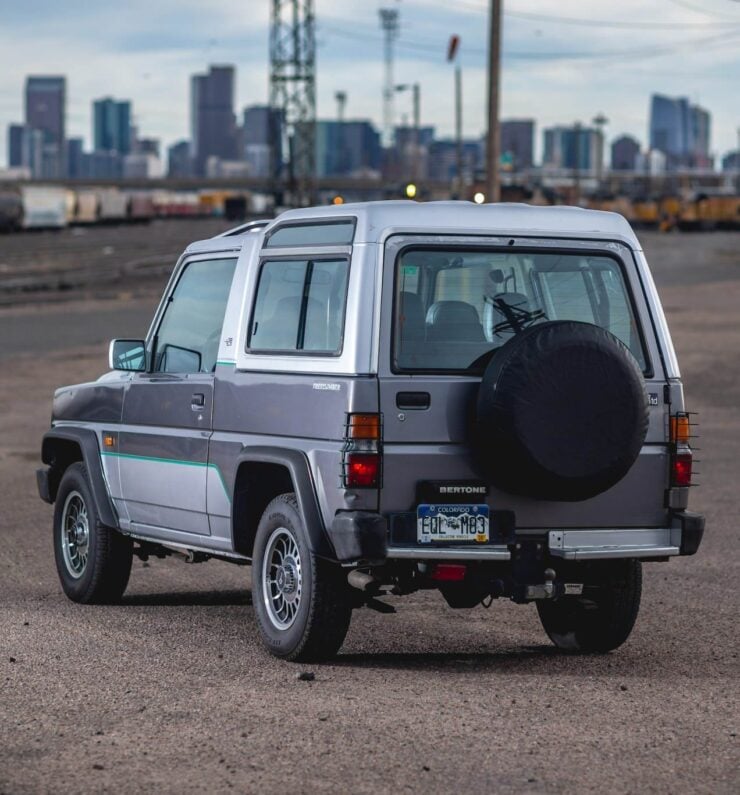
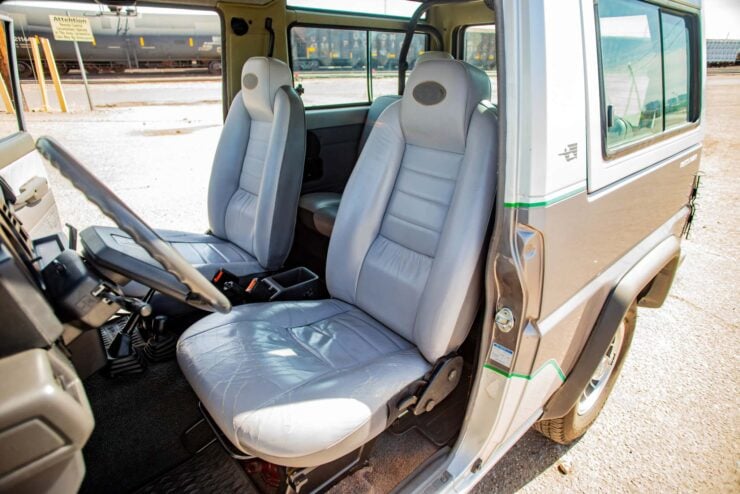
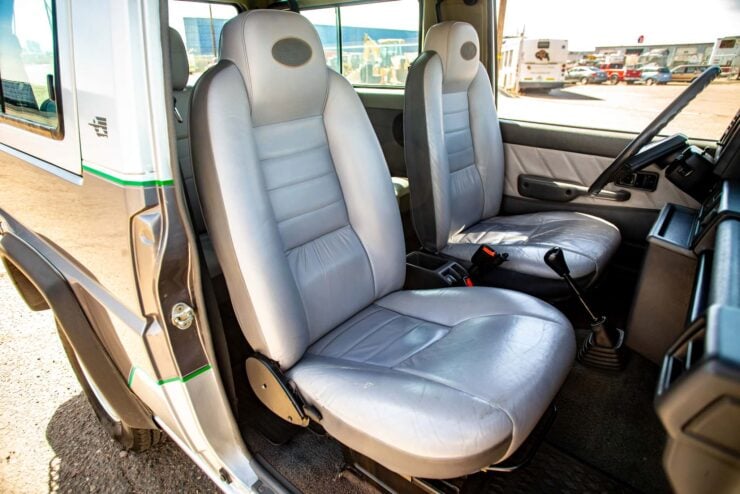
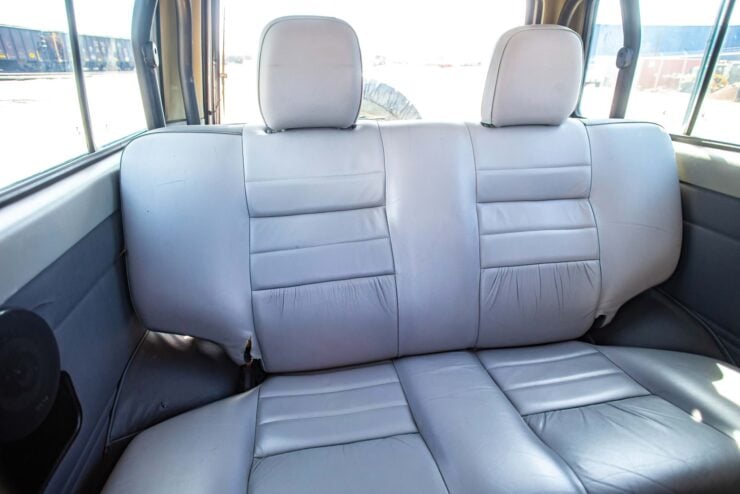
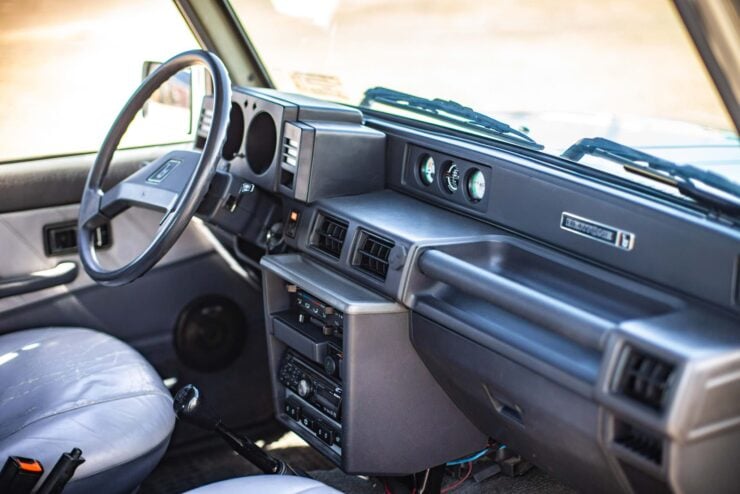
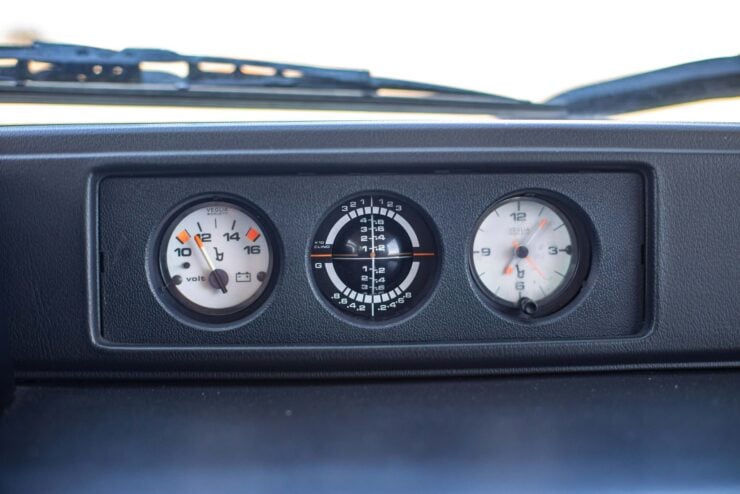
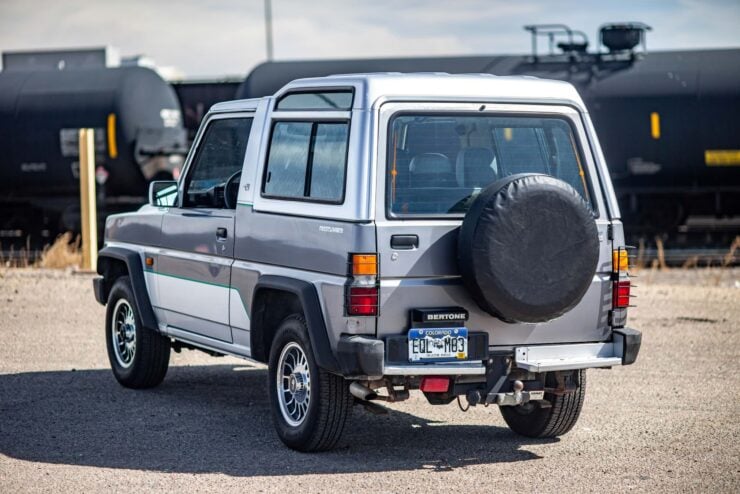
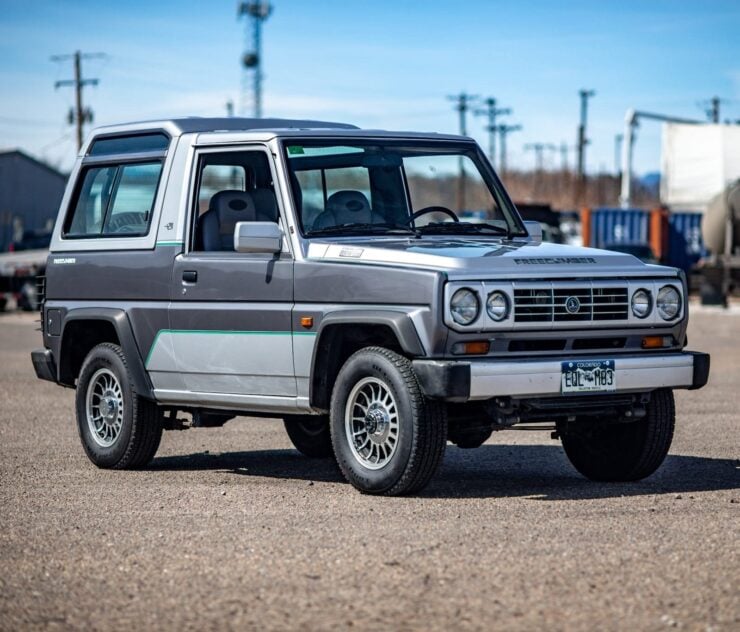
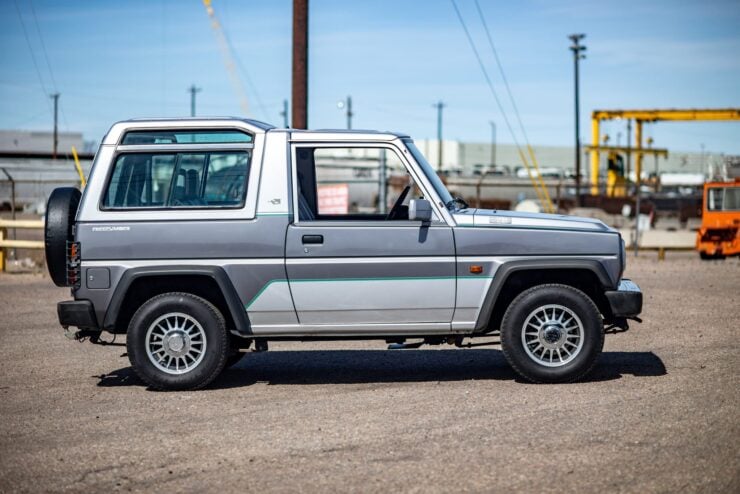
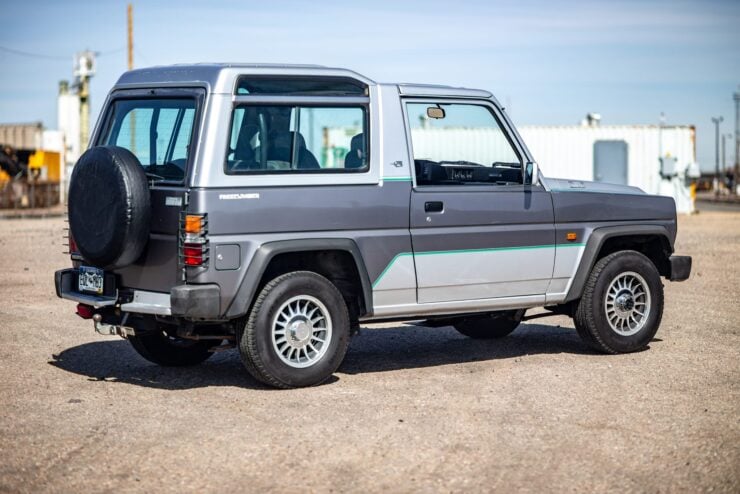
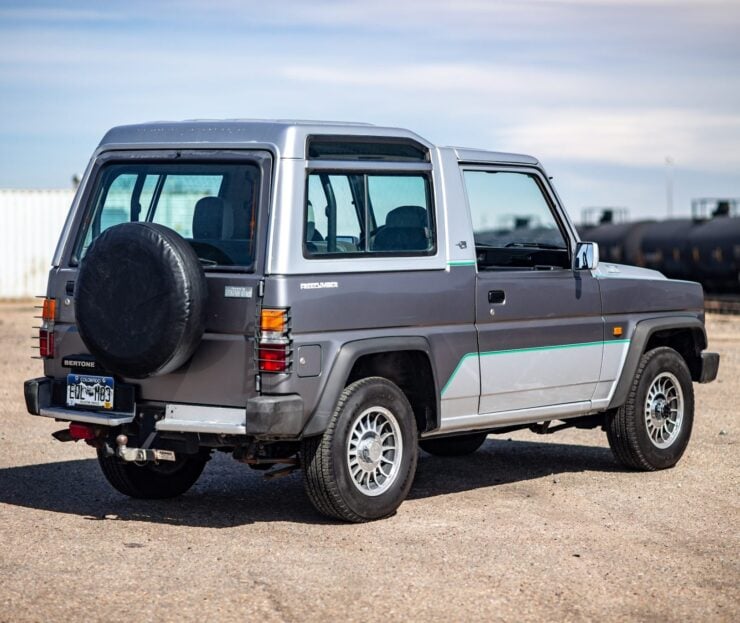
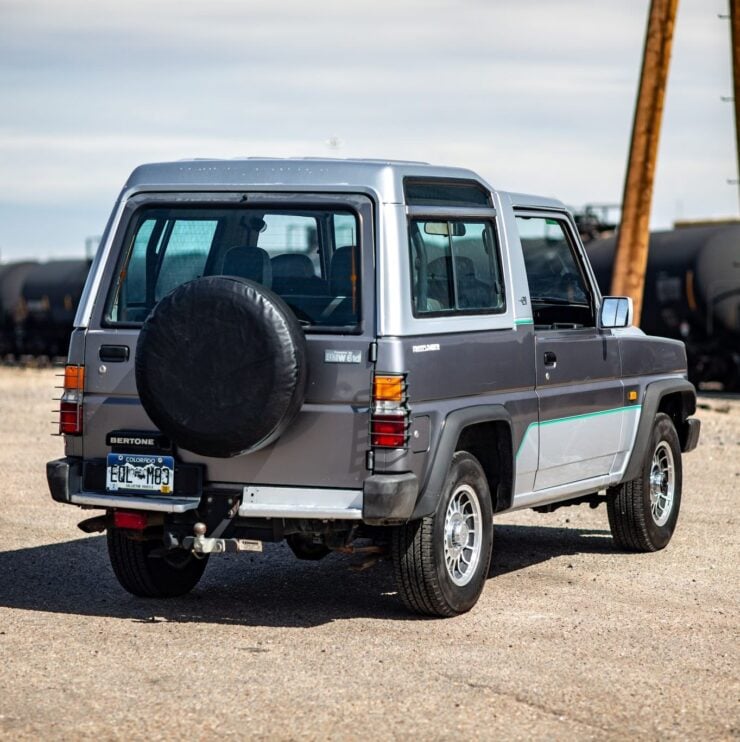
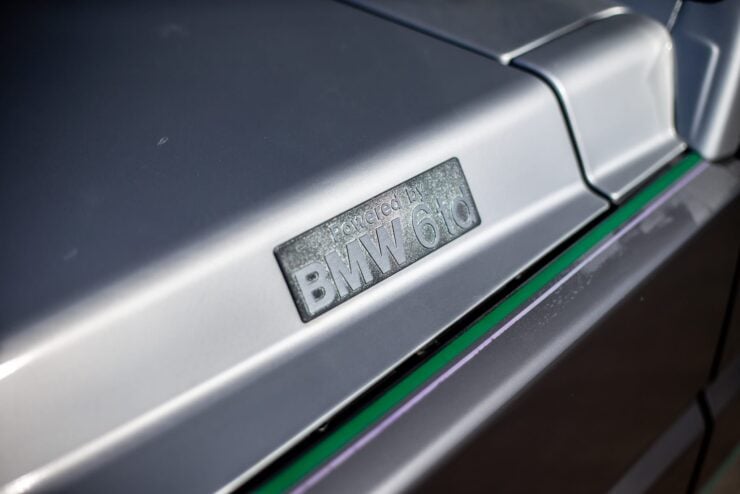
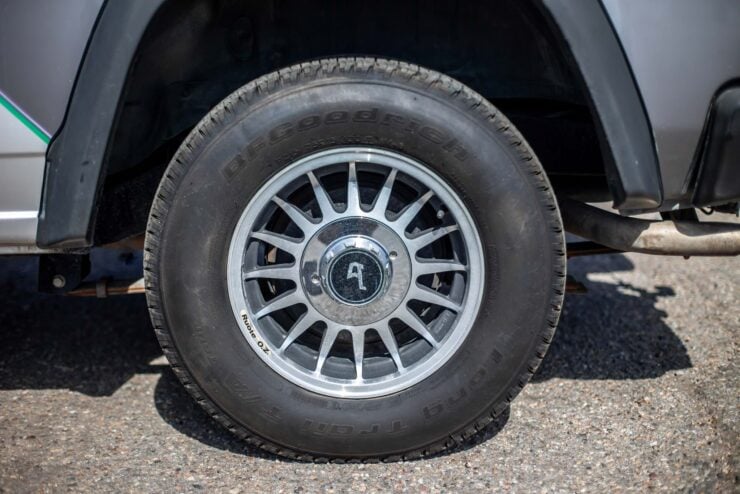
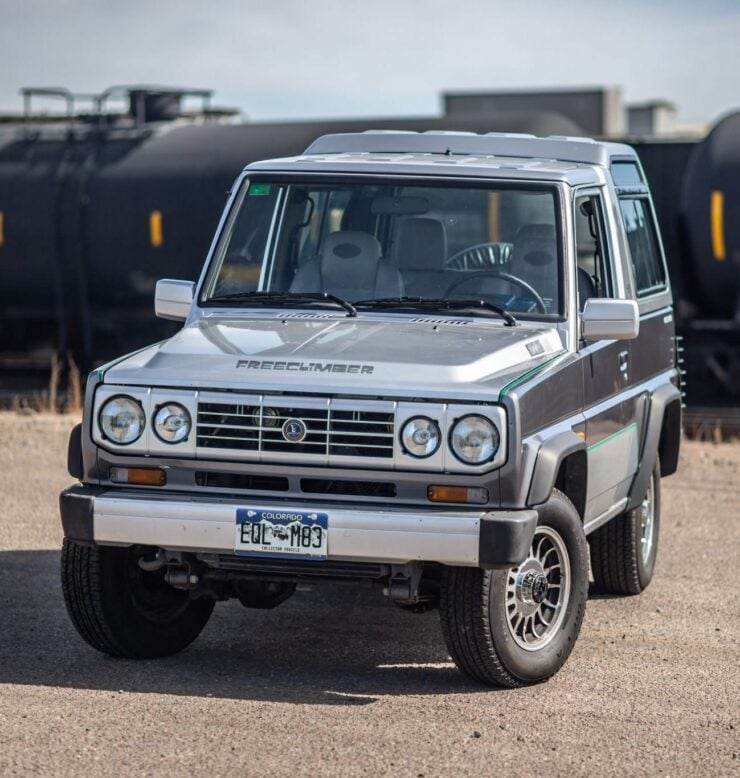
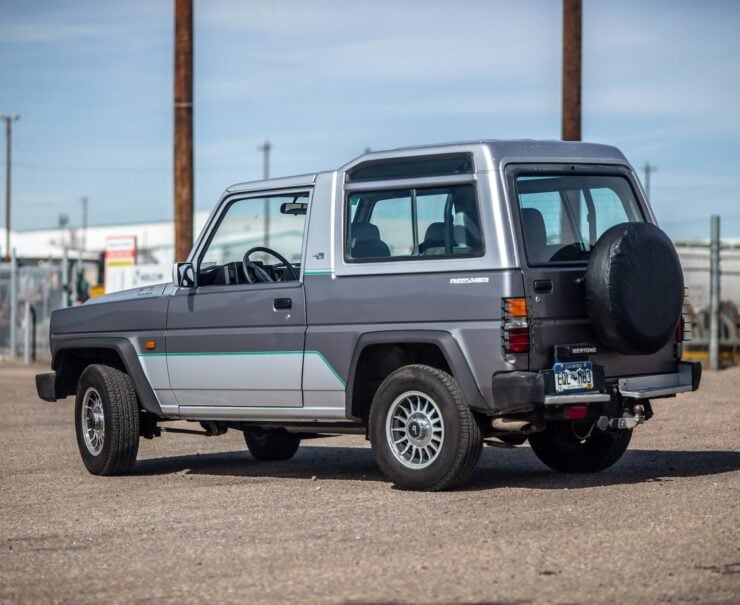
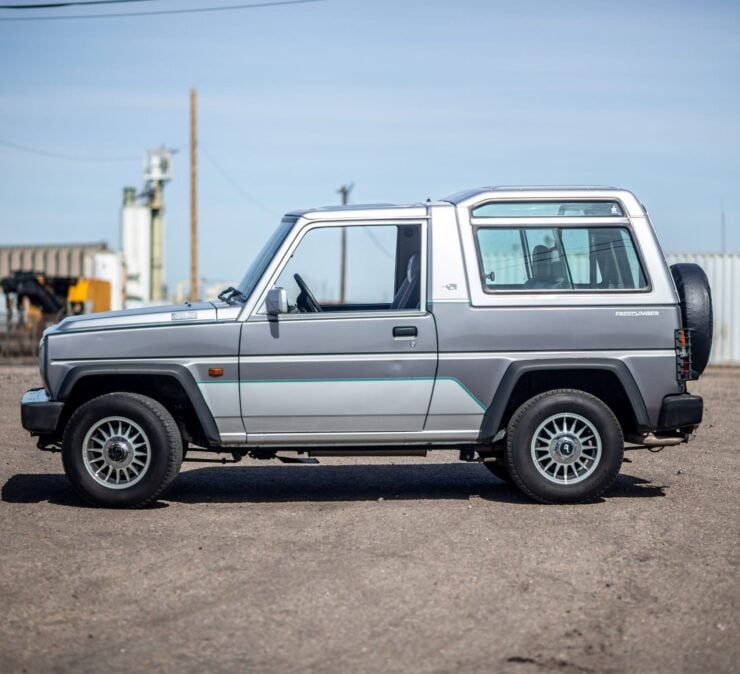
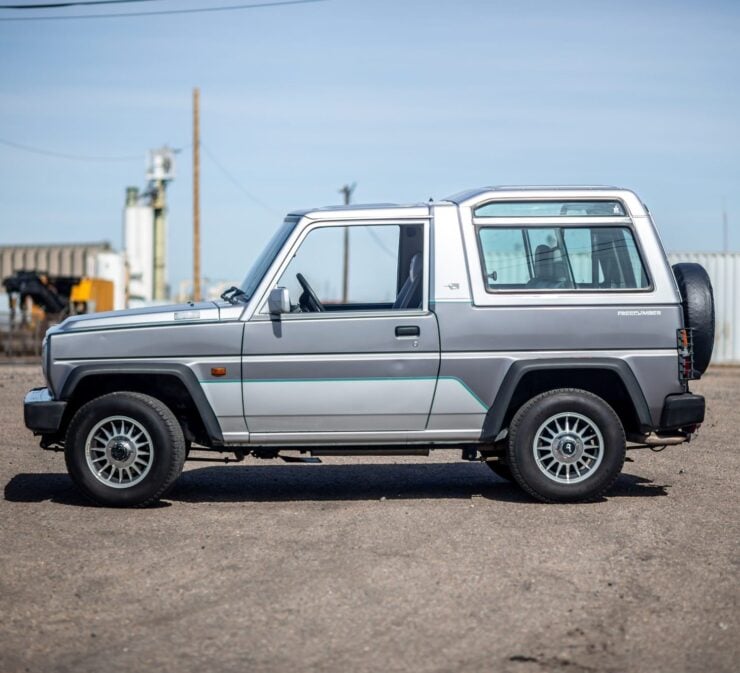

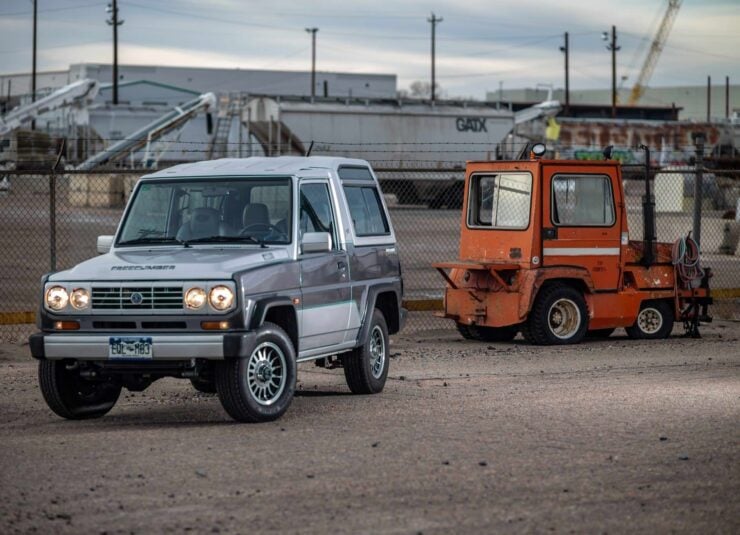
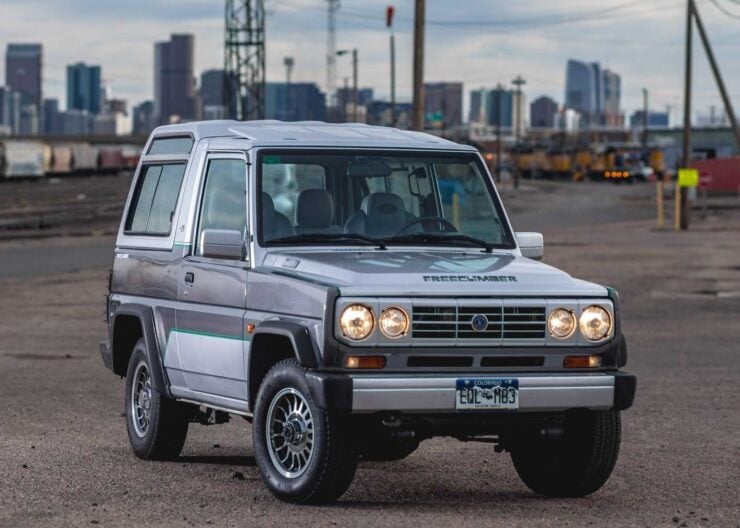
Images courtesy of Bring a Trailer

